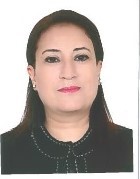
Duration
Four Years
Medium of instruction
English
Degree awarding body
SCD
Program Mission
The mission of the Visual Communication Program is to equip students with innovative design thinking approaches to communicate visually and effectively using theoretical and practical exposure to pursue a professional career.
Accreditation
Institutionally Accredited by OAAAQA & Overseen by the MOHERI in the Sultanate of Oman.
Substantial Equivalency of the Bachelor of Science in Interior Design from the National Association of Schools of Art and Design (NASAD).
Quality Assurance Certificate from the Accreditation and Quality Assurance Commission for Higher Education Institutions (AQACHEI - Jordan).
Program Description
The Bachelor of Science in Visual Communication is a four-year program for students seeking a more focused and intensive understanding of Visual Communication Design strategies using media-based design solutions. The specialized curriculum interweaves theoretical courses and practical studios to provide students with solid creative, artistic, and intellectual skills. The program gives analytical, formal, sensory, and technical experience, emphasizing a thorough understanding of the design process, structure, materials, and techniques. Students explore theoretical and historical design views and develop their drawing skills and conceptual thinking by developing skills in illustration, typography, and layout design projects. The program allows them to understand how visual communication media effectively express content, messages, and information in visual media design solutions.
Program Objectives
- To communicate ideas with visual messages effectively to inform, persuade, and incite individuals.
- To combine visual elements and analytical skills to produce visual communication solutions.
- To develop a variety of media using the design process.
- To use advanced technologies and techniques to express content, message, and information.
- To prepare a generation of visual designers with intellectual and innovative skills.
Program Learning Outcomes
- Practice general educational knowledge, such as research skills, business, and psychological principles, to apply them in their respective professions.
- Develop English proficiency to communicate effectively using art and design terminology.
- Apply art and design elements and principles to create artwork.
- Identify the influence of significant cultural and aesthetic trends, both historical and contemporary.
- Demonstrate creative skills using media design principles and conceptual thinking techniques in visual design solutions.
- Build the necessary professional skills using visual communication media strategies to compete in the international marketplace.
- Employ visual ideation professionally to communicate with a target audience using user-centered design methodologies.
- Integrate design-thinking processes using advanced technology to promote competence and creativity.
Year
Semester 1
ART510
Drawing I
3
DES511
Design Studio I A/B *
4
DES512
Technical Graphics I
3
DES513
Introduction to Design
3
ENG500
English for Art & Design 1
3
Semester 2
PHO510
Photography I
3
ART610
Drawing II
3
DES611
Design Studio II A/B *
4
LRT600
Learning Research Techniques
3
VCD510
Digital Design
3
Year
Semester 1
ART613
Perspective Drawing
3
ENG600
English for Art & Design 2
3
VCD610
Digital Illustration
3
CST510
History of Oman Civilization
3
VCD611
Design Process
3
Semester 2
DES720
History of Design
3
MKT611
Digital Marketing
3
ELEC500
Visual Communication Elective
3
VCD710
Corporate Identity Design
3
VCD711
Introduction to Typography
3
ART719
Sketching
3
Year
Semester 1
PSY500
Introduction to Psychology
3
ENG700
Fundamental of Oral Communication
3
VCD810
Advanced Typography
3
VCD719
Layout Design
3
VCD712
User Interface Design (UI)
3
Semester 2
VCD713
History of Visual communication Design
3
ENG800
English Academic Writing
3
ANI814
Motion Design
3
ELEC600
Visual Communication Elective
3
VCD811
User Experience Design (UX)
3
VCD812
Creative Thinking
3
Year
Semester 1
VCD813
Social Media Design
3
VCD814
Advertising Design
3
VCD716
Art of Calligraphy
3
VCD714
Visual Communication Seminar
4
VCD715
Infographics
3
Semester 2
VCD718
Digital Publishing
3
ENT600
Entrepreneurship
3
VCD816
Visual Communication Internship
1
VCD817
Visual Communication Senior Study
5
VCD818
Portfolio Design
3
VCD819
Media Development
3
Semester 1
ART510
Drawing I
3
DES511
Design Studio I A/B *
4
DES512
Technical Graphics I
3
DES513
Introduction to Design
3
ENG500
English for Art & Design 1
3
Semester 2
PHO510
Photography I
3
ART610
Drawing II
3
DES611
Design Studio II A/B *
4
LRT600
Learning Research Techniques
3
VCD510
Digital Design
3
Semester 1
ART613
Perspective Drawing
3
ENG600
English for Art & Design 2
3
VCD610
Digital Illustration
3
CST510
History of Oman Civilization
3
VCD611
Design Process
3
Semester 2
DES720
History of Design
3
MKT611
Digital Marketing
3
ELEC500
Visual Communication Elective
3
VCD710
Corporate Identity Design
3
VCD711
Introduction to Typography
3
ART719
Sketching
3
Semester 1
PSY500
Introduction to Psychology
3
ENG700
Fundamental of Oral Communication
3
VCD810
Advanced Typography
3
VCD719
Layout Design
3
VCD712
User Interface Design (UI)
3
Semester 2
VCD713
History of Visual communication Design
3
ENG800
English Academic Writing
3
ANI814
Motion Design
3
ELEC600
Visual Communication Elective
3
VCD811
User Experience Design (UX)
3
VCD812
Creative Thinking
3
Semester 1
VCD813
Social Media Design
3
VCD814
Advertising Design
3
VCD716
Art of Calligraphy
3
VCD714
Visual Communication Seminar
4
VCD715
Infographics
3
Semester 2
VCD718
Digital Publishing
3
ENT600
Entrepreneurship
3
VCD816
Visual Communication Internship
1
VCD817
Visual Communication Senior Study
5
VCD818
Portfolio Design
3
VCD819
Media Development
3
Course Details
Head of Visual Communication Department

I want to welcome you into the world of innovation and creativity. Now you are part of the hup of design creativity. you will have a great message is to provide your community with the best design solutions that contribute to the development of these societies throughout your design career.
Dr. Sherif Galal,
Head of Visual Communication Department
Scientific College of Design

1
Success in General Education Diploma or its Equivalent.2
The student should get a minimum grade of C- in Design Studio I & Design Studio II courses.3
The student should get C- at least in Introduction to Computer Graphics courseVisual Communication
Tuition Fees
| Duration | Credit Hours | Fees | Other Fees | Sub Total | |
|---|---|---|---|---|---|
| General Foundation Program | 2 Semesters | - | 2,575 OMR | - | 2,575 OMR |
| Design Foundation Program | 2 Semesters | 33 | 2,475 OMR | 250 OMR | 2,725 OMR |
| Bachelor Degree | 6 Semesters | 99 | 7,425 OMR | 750 OMR | 8,175 OMR |
| Grand Total | 13,475 OMR | ||||
* Fees / tuitions are subject to changed accoridng to the college financial polcies / procedures and upon MoHERI approval
Finance Details
Oman Arab Bank
3128231666500
Bank Muscat
0313029205120016
Sohar International Bank
043020017921
*All payment are accepted through bank deposit.



